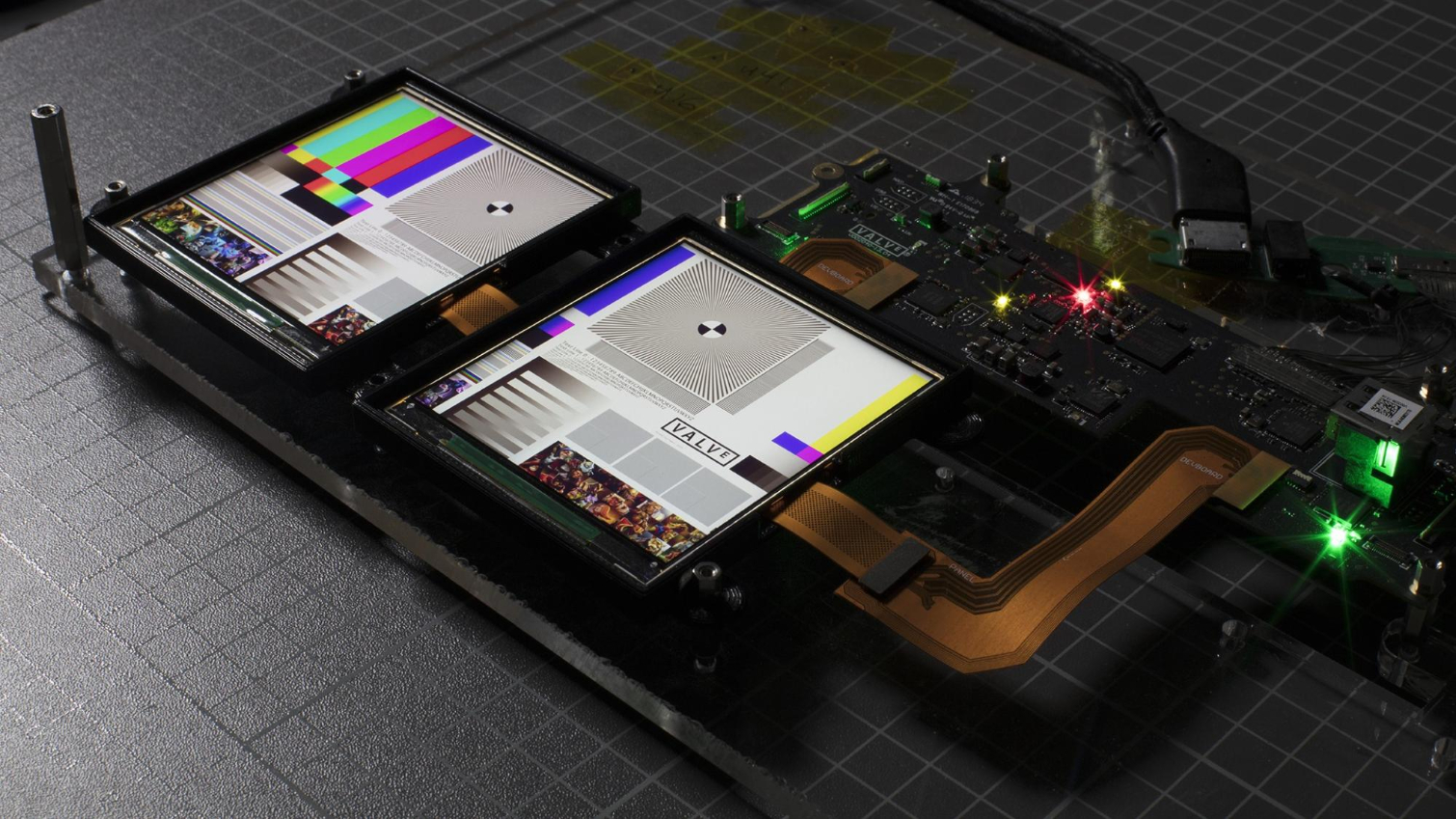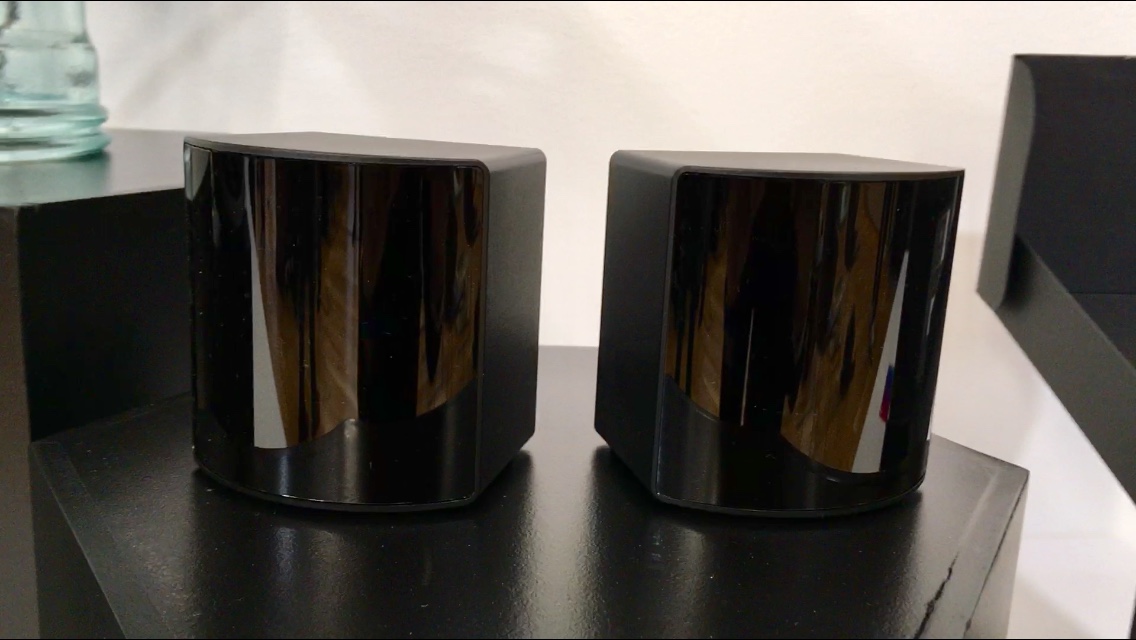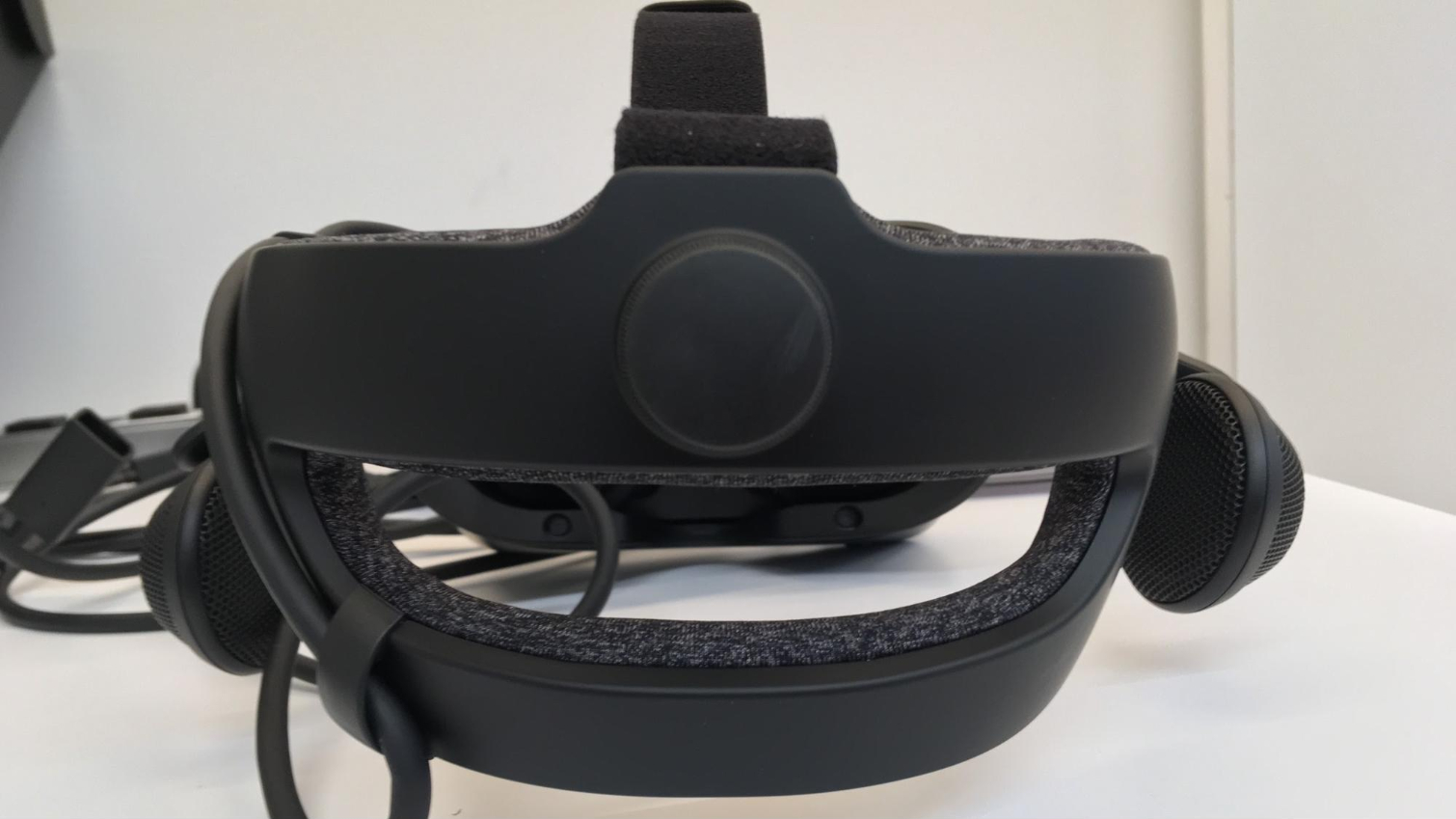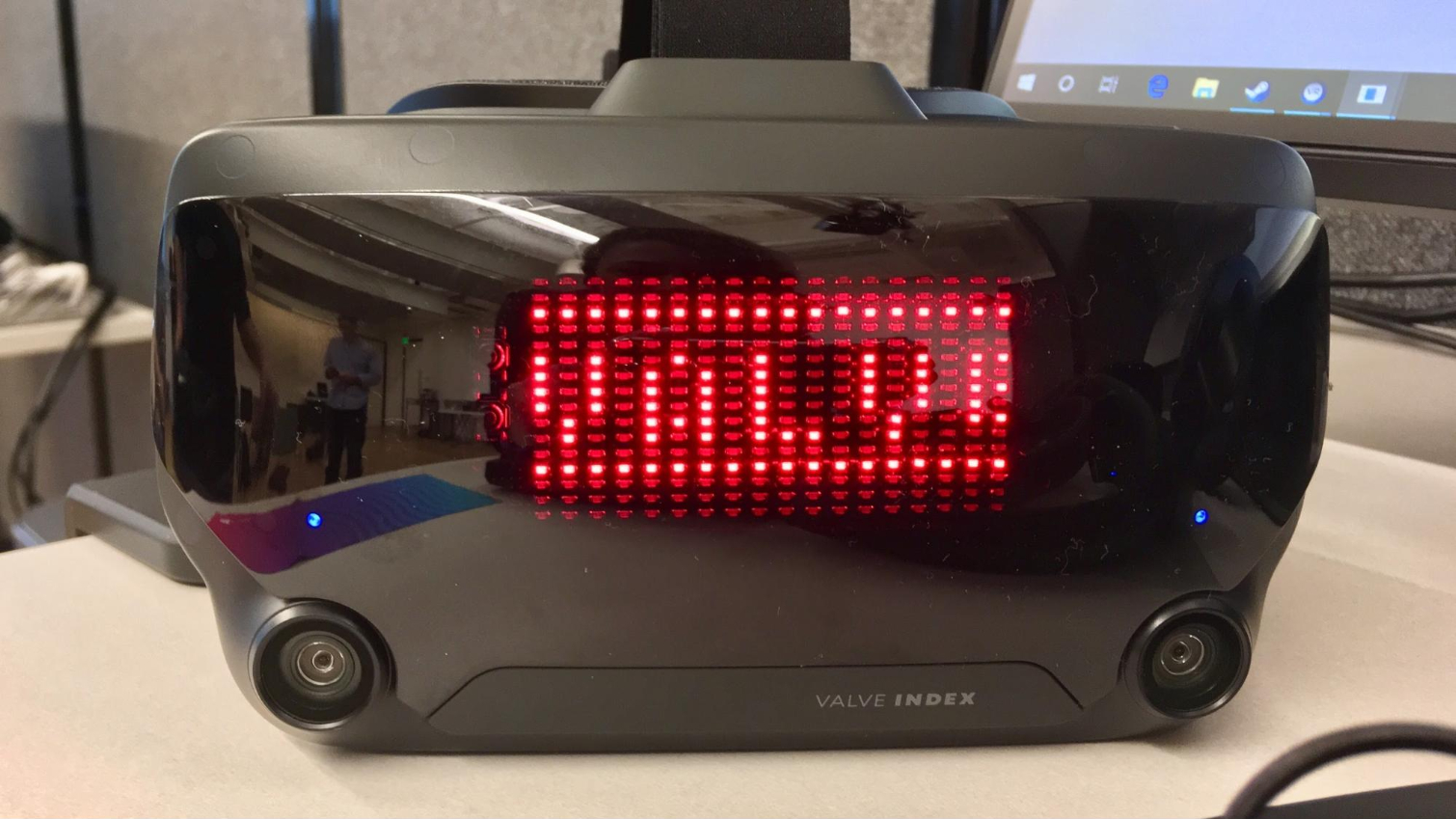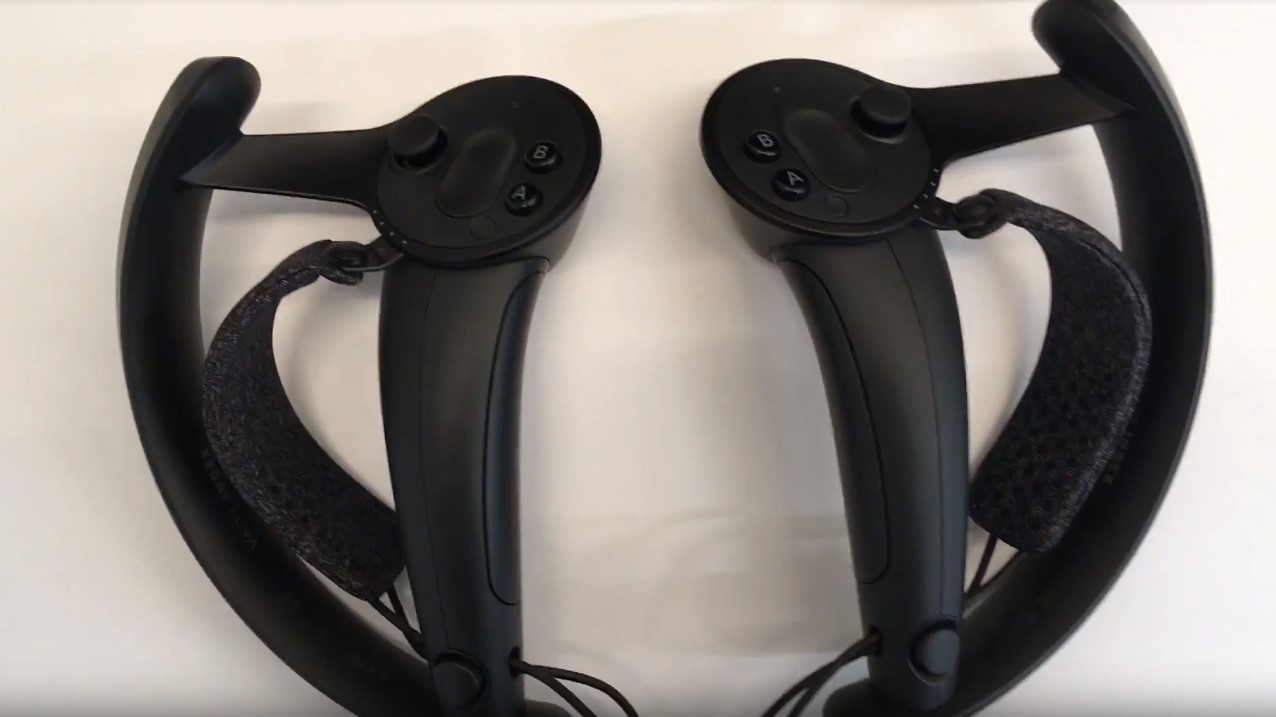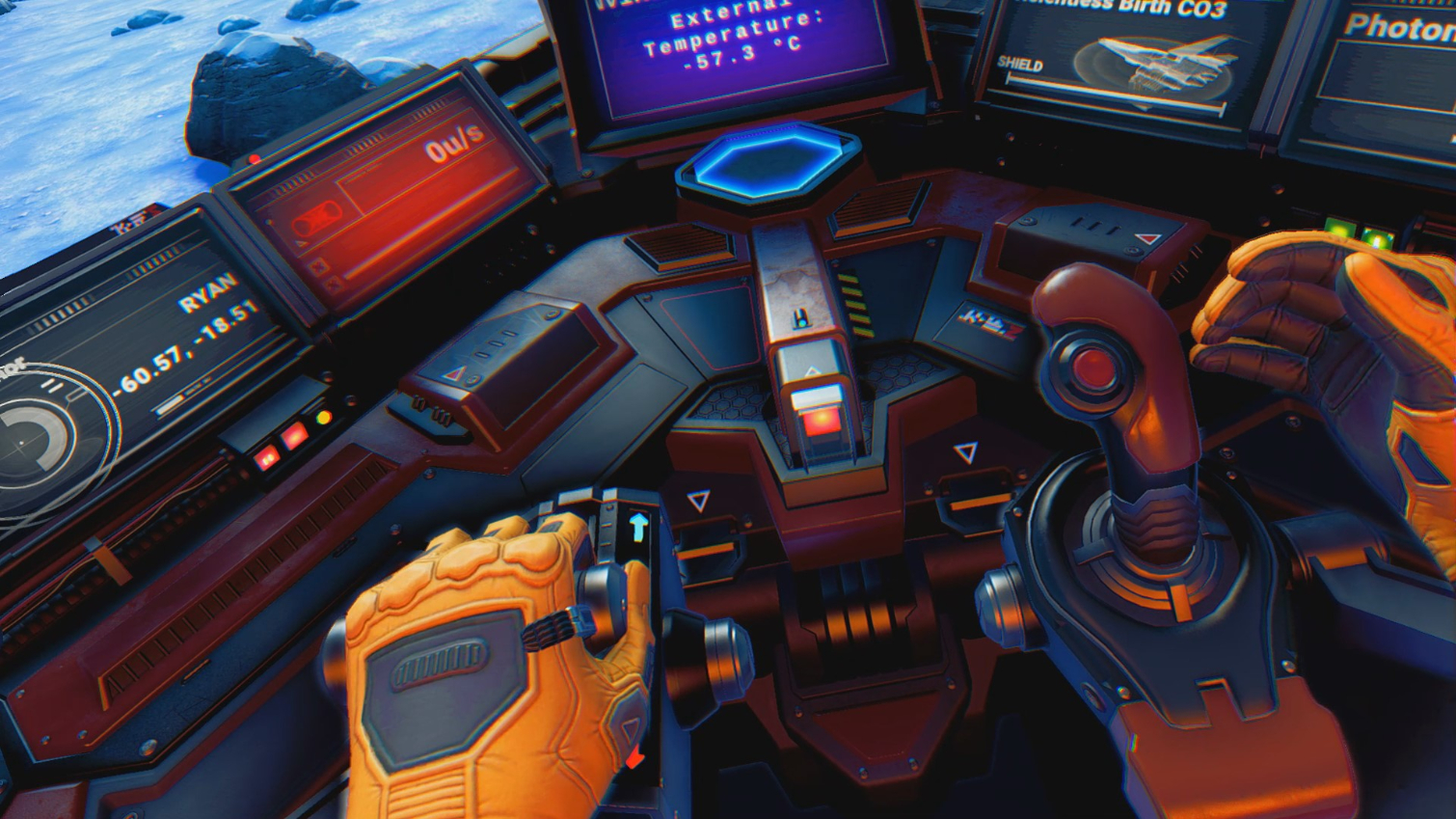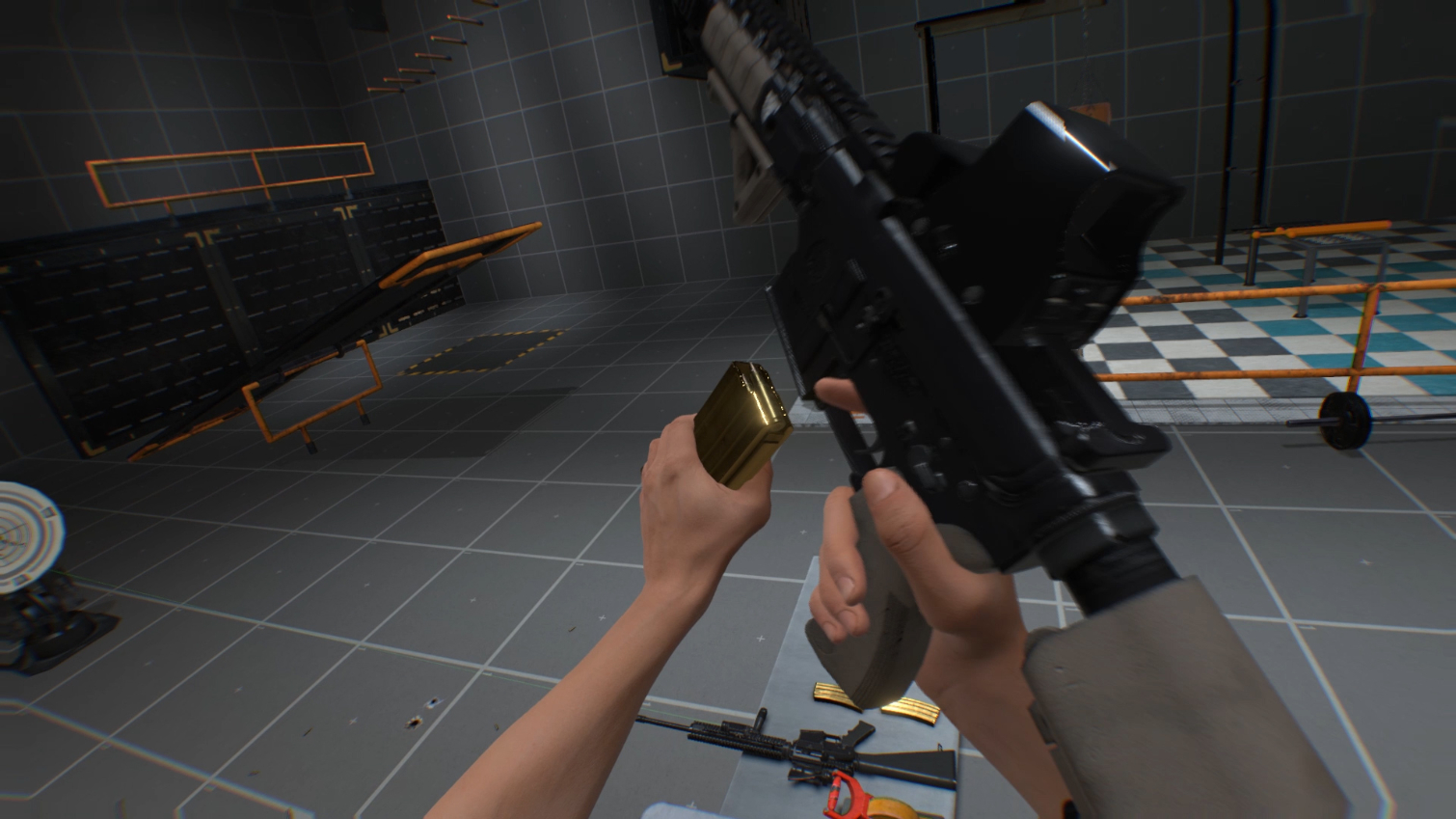Index VR: Hands-On With Valve's New Headset and Controllers
Look out, HTC and Oculus. Valve, the company behind Steam, is releasing its own VR hardware. At a press event, I played several games and demos on Valve’s new Index headset and controllers ($499 / £459 to start, $999 / £919 in full), that showcased the device’s powerful graphics and real-time finger tracking in a room-scale setting. Overall, the experience was an exciting taste of carefree hand and finger movements in VR and proof that Valve is already a formidable player in the VR hardware space.
It’s no surprise that Valve can make a good VR headset, as it already helped develop the HTC Vive. The Index is Valve’s attempt to build a more direct relationship with its customers than its current focus on PC gaming development and distribution. The Index targets experienced, existing VR users who want more from this generation of VR, including longer play times, better input and higher fidelity.
Display
The Valve uses two 1440x1600 panels, matching the output of the HTC Vive Pro and topping the Vive, Oculus Rift and its upcoming replacement, the Rift S.
Like the HP Reverb, the Valve opted for LCD panels over OLED. During the press event, Valve said LCD offers 50% more subpixels than OLED, aiding text legibility and fidelity in scenes with a lot of color. LCD also lends for smaller gaps between individual pixels and a greater fill factor, which means less of that screen door effect. According to Valve, the Index has a 50% fill factor, compared to OLED’s 16%.
To fight the nauseating effect of the world looking blurry when you turn your head in VR, the Index uses low-persistence displays. Tracking is conducted through Valve’s Lighthouse Tracking technology, which basically fills the room with light you can’t see to create a reference point for the headset and controllers. Alongside the resolution, this is all supposed to contribute to the image’s sharpness.
In terms of field of view (FOV), Valve said the Index offers a 20-degree greater FOV compared to the “typical” Vive experience, thanks to some neat tricks.
Those lamenting the Rift S’ lack of a physical IPD adjustment (for changing the space between the two panels to match the distance between your pupils) will appreciate the IPD sliding knob on the bottom of the Index that prompts an on-screen display of your IPD, showing you the distance in millimeters as you adjust.
Get Tom's Hardware's best news and in-depth reviews, straight to your inbox.
There’s also a knob on the right side of the headset that you can turn to move the eye tubes closer or farther away from your eyes. Moving it 1 centimeter alters the FOV by 30 degrees. In that way, Valve claims that every user can experience the Index’s full FOV. When I watched a movie and trailer on YouTube, I felt that my full FOV was filled, from the wide screen filling in my front views and the virtual seats taking care of the peripherals. However, I would appreciate an on-screen display to help with fine-tuning like there is with the IPD.
Outside-In Tracking
The Index uses outside-in tracking and therefore requires external base stations. You can use up to four, for a seated 10x10 meter play space. Unlike the Rift’s three required base stations, these don’t need to connect to the PC via USB. However, the Index HMD and controllers are also compatible with Vive base stations.
With inside-out tracking coming in the Rift S and Reverb and standalone headsets like the Oculus Go and upcoming Oculus Quest and HTC Vive Cosmos, it’s very surprising to see Valve come out with a headset reliant on intrusive base stations. But the company explained that it wants to use the highest-quality tracking in order to drive fidelity. And, it’s clear Valve is marketing Index to VR enthusiasts seeking the most premium-grade VR system, not newcomers.
As for using the Index’s two cameras for eventual inside-out tracking, a Valve rep said “we can’t predict the future.” For now, the cameras will be reserved for computer vision experiences.
Audio
Audio is covered by two nearfield off-ear speakers that don’t make contact with your ears, but instead hover above them. The idea is that they put audio into your environment and let your ears react for a more natural sound.
The speakers definitely surrounded me in noise, to the point where I couldn’t hear the person standing next to me asking questions. In a Boneworks demo, I particularly appreciated the surround-sound like feeling of the audio, which played dramatic music when I was cornered, making things all the more intense and nerve-wracking and ultimately causing my death. I also noticed that I could hear the music from someone playing Beat Saber about 5 feet away.
You can push the speakers forward and backward to align perfectly with your ear or to open your ears to your real environment. In testing, I didn’t feel any ear pain or discomfort.
Comfort and Customization
The Index uses antimicrobial fabric, has a back knob for making the headset tighter or looser and comes with an adapter for people with smaller heads.
In a fun twist for modders, the Index HMD has a surprising amount of customization possibilities. The front faceplate is removable and magnetic, so Valve is expecting cool print options from third parties and individual customization.
When you take off the faceplate, you’ll find what Valve is unfortunately calling the “frunk.” Here, users can access a USB 3.0 port with connectivity back to the host PC. Valve will make the CAD files for the full headset and the expansions ports available so third-parties can use them to make accessories.
Index Controllers
People following VR may better know the Index controllers under their former development name, Knuckles. Valve is finally releasing its VR controllers with the Index headset, or separately for $279 / £259 per pair. The controllers are compatible with any Steam game and headsets using SteamVR tracking.
Each controller uses the same antimicrobial fabric as the handset and has 87 sensors, including optical ones for detecting the location, motion sensors for understanding how it’s moving through space, capacitive sensors to read the location of your fingers and thumbs and force sensors for reading pressure. The latter worked well in a demo where a robot asked me to give it a very firm handshake.
Real-time finger tracking means you can place your hands in any position, like a peace sign or fist, and it’ll translate in VR simultaneously. Two different adjustment straps keep the controller secured to your hand, so you can do open-hand movements like throwing.
Each controller has a combination trackpad / button with haptic feedback and some sensors of its own. The button placement is intuitive; by the end of the first demo, I felt like I could find each input without removing the headset.
What I did struggle with was getting the controller to consistently read all 10 of my fingers. It seemed to be very specific to the adjustment of the two straps. Without the bottom strap pulled tight enough, my middle, ring and pinky fingers weren’t squeezing the controllers tightly enough, and the game would think my fingers were lifted.
Without getting the adjustment for accommodating different hand / finger sizes perfect, my hands were too high or low, and the game would think my pinky was my ring finger. This made virtual games of rock paper scissors, or the ability to pick up, hold a key and turn it in a lock, or the dream of making a VR peace sign a struggle.
Ultimately, with everything perfect, the finger tracking worked pretty well. But that implies the controllers were strapped on pretty firmly. We’ll have to wait until our full review to see what that means for hours of playtime.
Gaming
The Index HMD and controllers are compatible with the entire Steam library. I tried out several demos that were heavily reliant on hands, including No Man’s Sky, Boneworks and Vacation Simulator, and also watched 2D content on the Index. It delivered all content smoothly without any glaring mudra or screen doors. I very rarely noticed any aliasing, and this only occurred in very white or bright scenes or in the periphery.
The Index supports a 120 Hz refresh rate but is backwards compatible with 90 Hz and can even go up to 144 Hz as an experimental feature. Impressively, some of the demos I saw were run at 144 Hz, yet, with no motion blur I couldn’t independently tell the difference between the 90, 120 and 144 Hz demos. A spokesperson said 144 Hz works with some games with a GeForce GTX 980 graphics card.
No Man’s Sky showed off the brilliant display capability of the Index’s 4.6 million pixels, with fantastic reds, oranges and yellows filling my FOV. When I jet-speeded through space or leaped around rapidly I was pleased by the Index’s ability to keep up. The controllers were great for shooting at rocks I wanted to mine, while finger tracking was an amazing asset for using my hands to pull levers and push buttons to fly my spaceship.
Boneworks really showed off the dexterity and control enabled by having full hand and finger control in VR. I was able to grab and throw items; although, it took a few tries for me to be able to do it fluidly. I also appreciated that I never had to worry about making sure I squeezed hard enough to hold a weapon or swing it at an opponent.
The controllers charge via USB-C and reportedly offer over seven hours of battery life with a 1,100 mAH capacity Li-Ion polymer battery.
Valve Index Price
Valve will start taking pre-orders for its HMD and controllers on May 1 for the U.S. and EU. Products will ship by the end of June. Since both offerings are compatible with SteamVR base stations 1.0 and 2.0, it’s selling its hardware in various packages.
| Index HMD | Index Controllers | Index HMD and Controllers | Base Station | Kit (HMD, 2 controllers, 2 base stations) | Face Gasket 2-Pack | Valve Index HMD VirtualLink Type-C Cable |
| $499 / £459 | $279 / £ 259 | $749 / £689 | $149 / £139 | $999 / £919 | $39.99 / £36.99 | $39.99 / £36.99 |
What About HTC?
Tom’s Hardware asked Valve if it’d still be working with HTC to develop hardware, and a spokesperson said “Valve continues to collaborate with HTC and a growing set of SteamVR hardware partners. We’re excited for their future products and our future collaboration.”
Still, it’s clear that Valve is seeking to take a piece of the VR pie from HTC with convenient compatibility with the same hardware Vive users already own, as well as Oculus.
Bottom Line
Off the bat, Valve enters the HMD arena with a few advantages. For one, it helped develop the already-popular HTC Vive. Plus, it’s releasing the Index alongside its highly anticipated controllers. Then there’s the obvious. Steam already has its hands all over the PC gaming market. In fact, it will release its first flagship VR game this year, which will be compatible with any headset using Steam.
Valve is putting out a premium system, banking on VR gamers wanting more out of their setups. Its finger tracking is certainly a fascinating grab, and its display seems to hit all the sweet spots for comfortable gaming.
At $999 for a full set, Valve is asking a lot, especially for those coming from the Oculus side. And with the need for base stations, Valve is cutting its potential market even further, especially as more inside-out tracking and standalone HMDs come out at lower prices. On the other hand, it has Vive-like room-scale tracking, and its controllers are the best finger tracking innovation we’ve seen since trying out the $6,000 XTAL headset.
A Vive Pro set is just $100 more than the Index's kit for enterprise-grade VR. The Index might woo gamers seeking that level of experience, while more conservative and new VR users will certainly lean more toward something like the $399 Rift S or Quest.
It’ll be up to Valve to prove to VR gamers that they require a system of this caliber and need to spend at least $499 more than they already did on their current VR setup to do so.
Photo Credits: Tom’s Hardware

Scharon Harding has over a decade of experience reporting on technology with a special affinity for gaming peripherals (especially monitors), laptops, and virtual reality. Previously, she covered business technology, including hardware, software, cyber security, cloud, and other IT happenings, at Channelnomics, with bylines at CRN UK.
